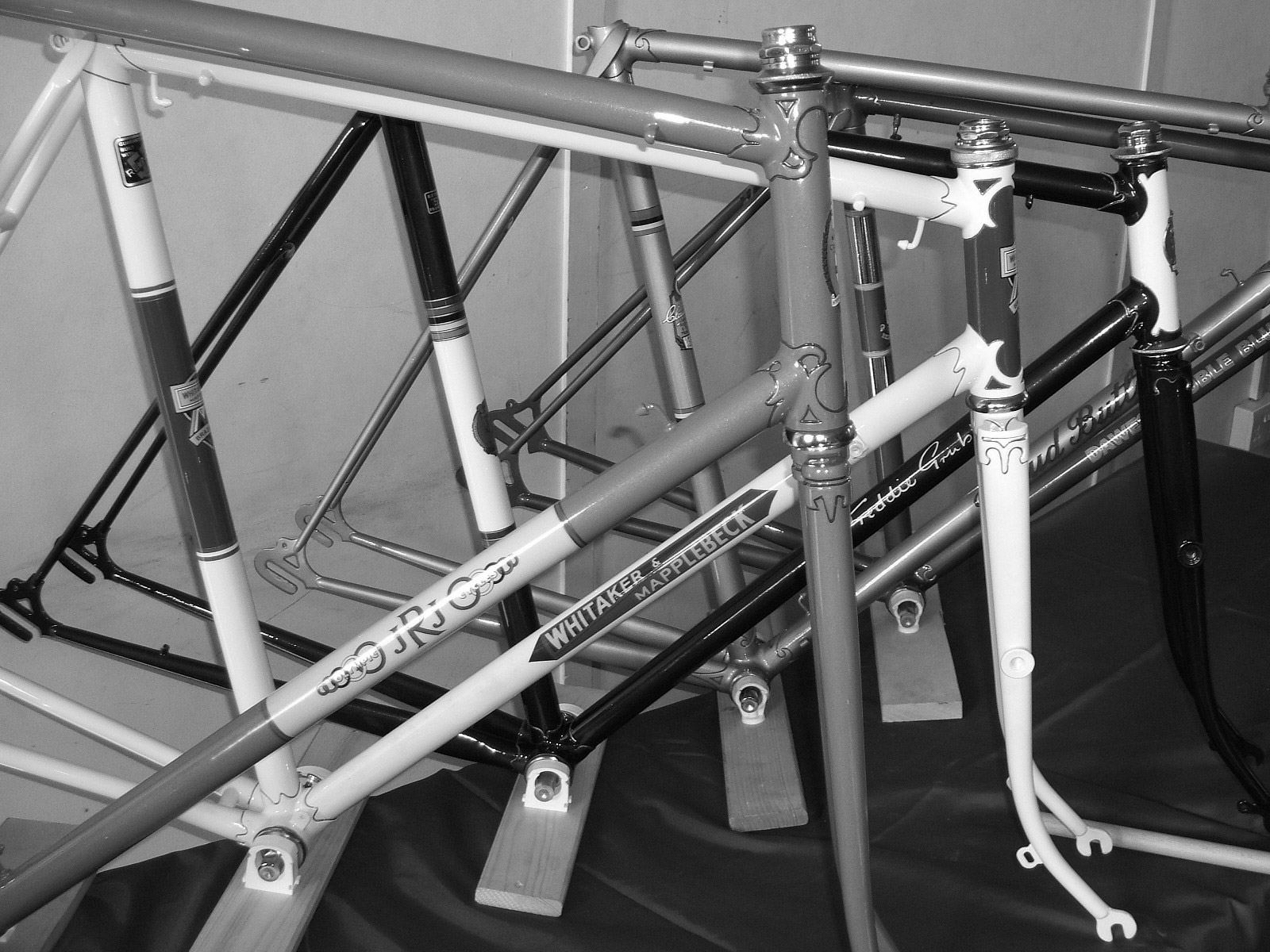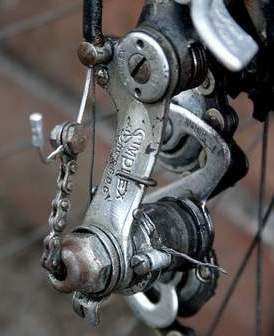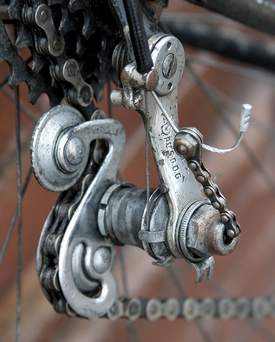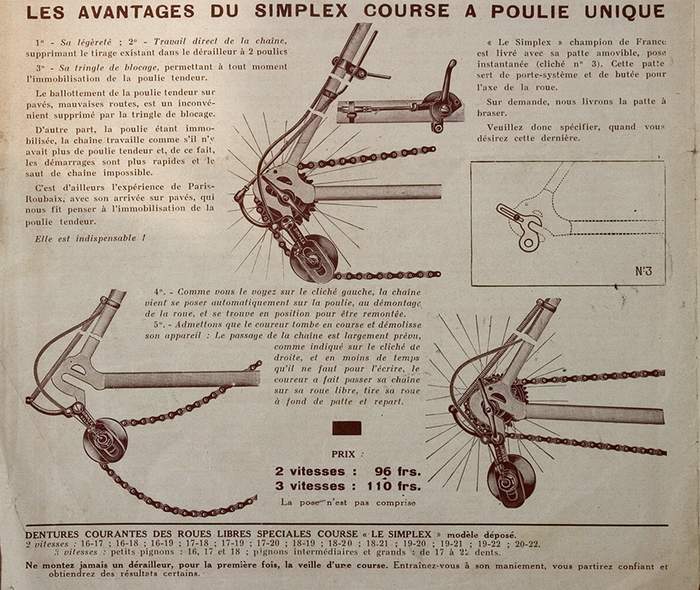Simplex plunger/push-rod derailleurs
Posted: Wednesday 12th August 2020
We’ve looked at other milestones in the history of the derailleur gear before in Design Classic. We now fill in one of the important gaps with Simplex’s plunger/push-rod rear gears. In the late 1940s and 1950s these gears dominated professional (and a lot of amateur) cycle racing with good reason – they offered a faster sweeter change than even Campagnolo’s Gran Sport gear introduced in 1951. The Simplex gears were so good that they were almost capable of being indexed due to their ultra precise shifting. The Gran Sport and its derivatives were to dominate the racing scene later but this was because of their other qualities, robustness and ease of set-up primarily.
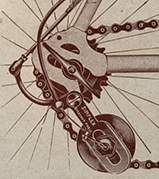
The founder of Simplex, Lucien Juy, a Dijon bike shop owner, launched Le Simplex derailleur in 1928. It used a single pulley to tension the chain and a pair of guide plates to push the chain to each one of two sprockets. The whole arm was spring loaded in order to tension the chain – this was the first use of the sprung top pivot which was to become an essential part of the modern indexed derailleur as we know it today. The pulley and guide plates were moved sideways on a push-rod by means of a chain pulling through the centre of the push-rod. Lucien Juy managed to persuade the management of the Alcyon racing team to fit his Le Simplex gear to their machines for the 1928 Paris–Roubaix – unfortunately the riders revolted and refused to use the new unproven gears.
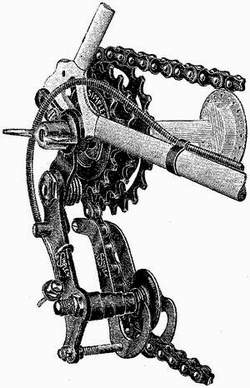
This did not deter Lucien Juy too much and by the early 1930s many racers were using Le Simplex – 100 races were won using the gear in 1931 and 200 in 1932. It was being produced in quantity – Simplex claimed that they made 40,000 gears in 1933. Four diffferent national French championships were won that year on the Le Simplex gear which was now available in a 3-speed version too. And a special fork end was available which the gear could be directly fitted to removing the necessity for the bracket. Two years later this was developed into the Champion de France gear with much larger side plates to move the chain – this gear was Simplex’s main racing gear for the next 11 years though was not as popular with the racers as the Super Champion Osgear.
The Champion du Monde (the 1936 version) was probably the world’s first gear to be offered in a 5-speed version to be used in conjunction with a 5-speed freehub whose sprockets slid onto the freehub with an octagon fitting and was the first use of 3/32in chain.
Simplex also offered a range of gears for touring, utility and city bikes – these were enormously successful and completely dominated the market in most of Europe except for Britain.
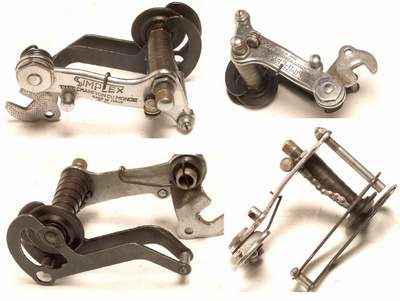
But back to the racing gears – the Champion du Monde continued in production after WWII in both France and Italy. The key moment in the development came with the substitution of a pulley for the two side plates. This offered a much more precise change – the first version was not entirely successful in having a back plate in two pieces but a year later it was modified with a single piece rear cage. The sprung top pivot ensured that the top pulley was close to the freewheel sprockets and this resulted in a lightning fast shift action. Almost immediately the Tour de France became the standard gear of the peloton. The introduction of Campagnolo’s Gran Sport gear in 1951 changed things a little initially and by the late 50s had almost completely taken over the pro peloton. The plunger/push-rod rear Simplex gears shifted much better but were more prone to accident damage and were considerably less robust. Additionally different versions were required for 3, 4 or 5-speed freewheels making stock control harder for cycle shops. Fitting and adjustment was also fiddly and more time consuming than for the Gran Sport.
In 1951 the Juy 51(images below) was introduced which featured a second cable which automatically adjusted the chain tension with wide ratios.
For 1957 Simplex introduced plastic jockey pulleys for the TDF gear. These proved very successful and hard wearing and were adopted on the development of the high end plunger/push-rod gears introduced in 1959. The original plastic pulleys featured plain bushes but the high-end gears used a version with ball bearings.
But Simplex did not rest on their laurels and in 1961 introduced a parallelogram gear with a sprung top pivot – this outperformed the Gran Sport by a large margin but did not have the quality feel the Gran Sport had. The TDF gear continued for a couple of years but better gears were now available.
Simplex Plunger/Push-rod Racing Rear Derailleur Timeline
1928 Introduction of Le Simplex derailleur
1929 Production begins properly
1935 Introduction of Champion de France derailleur named on account of multiple French champions using Simplex gears. This gear became the Champion du Monde gear in 1936
1939 Simplex experiments with hard rubber pulleys
1947 Introduction of first version of the Tour de France two-pulley gear
1951 Simplex Juy 51 gear introduced with second tensioning cable
1955 Simplex 543 gear introduced
1957 Plastic pulleys used as standard on Tour de France gear
1959 Juy 59 introduced as replacement for Juy 51 and Record gear as replacement for 543 with plastic pulleys
1960 Record 60 – the ultimate development of the plunger/push-rod gears
Posted: Wednesday 12th August 2020
This article appears in the following categories.
Upcoming Events
Whether you are looking for a gentle social meet up, or a 100-mile ride browse the community’s upcoming events and plan your next weekend outing.
